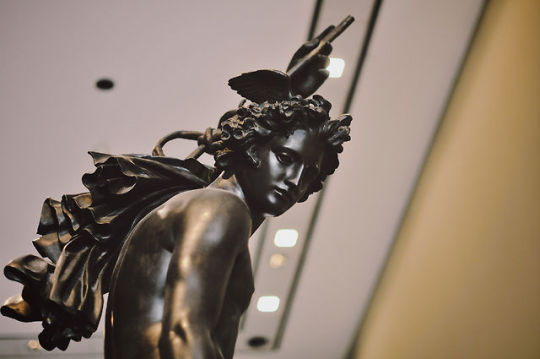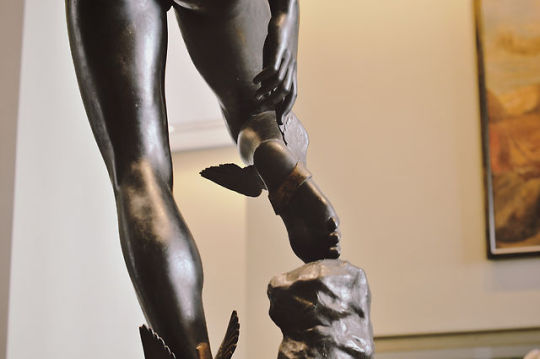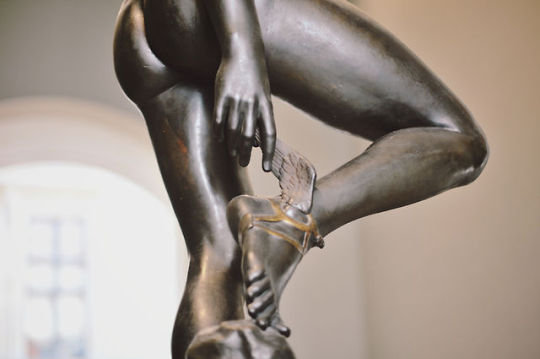iliad / epic cycle sideblog (main is slettlune). teucer adorer. thetis supporter. nestor understander. tydeus espouser.
Don't wanna be here? Send us removal request.
Photo

Claude-Clair Francin (1702-1773) “Ganymede” Marble Located in the Walters Art Museum, Baltimore, Maryland, United States
In 1743, Louis XV of France commissioned the statue for the gardens of Versailles. A plaster model of the figure was exhibited two years later at the Paris Salon, but Francin never finished the marble. At the request of the count of Maurepas (chief adviser to Louis XVI), Nicolas-François Dupré completed the statue in 1777-87.
269 notes
·
View notes
Text
“Nothing I say was learned from others. This is my life, my ordeal, long as the siege he laid at Troy and more demanding.”
— Clytaemnestra in Aeschylus’s Agamemnon [transl. Robert Fagles] (via injusticeworth)
44 notes
·
View notes
Text

Andromache and Hector
157 notes
·
View notes
Photo
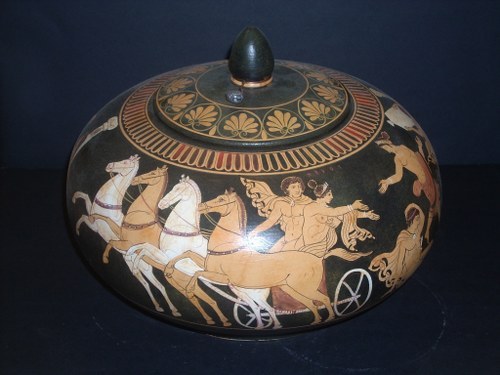
#i don't know for sure and i get 0 matches reverse image searching this but it looks a lot like an abduction-of-the-leucippides motif?#castor#polydeuces#phoebe of messenia#hilaera
344 notes
·
View notes
Text
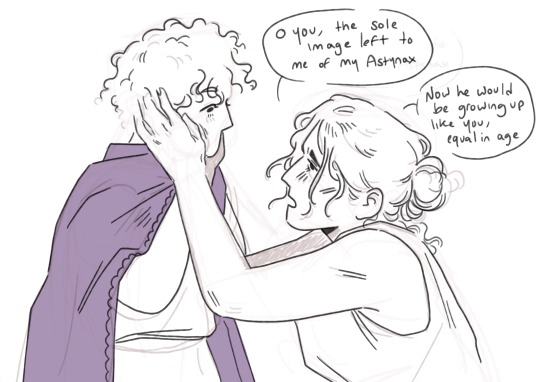
all this pyrrhus talk got my thinking about that scene in the Aeneid where Andromache meets ascanius
330 notes
·
View notes
Text
“Then the Father opened out his golden scales. In the pans he put two fates of death’s long sorrow, one for Achilleus and one for Hektor the tamer of horses, and he took the scales in the middle and lifted them up: and Hektor’s day of doom sank down, away into Hades…”
— The Iliad book 22, The Death of Hektor
35 notes
·
View notes
Photo

“Then down from heaven came Athene and drew nigh him, fashioned in the likeness of a women.” from The Odyssey of Homer by W. Russell Flint (1924)
#WHAT is going on in the back what part is this??#i love how cuntily he's moping on the floor tho#athena#odysseus
893 notes
·
View notes
Note
Why do you think Menelaus was the only Achaean warrior from the Trojan War to get promissed an afterlife in the Isles of the Blessed? Proteus tells him this, but all of the other warriors are seen with other souls in the dank part of the Underworld by Odysseus, including Achilles, Agamemnon and Ajax. Even the "mortal half" of Heracles, the greatest hero of all, is there, not in Elysium.
well, he's zeus' son-in-law. proteus' prophecy definitely makes it sound like it's a rare priviliege that menelaus will be allowed to go to the blessed isles after death, but i don't really read it as menelaus being the only achaean warrior ever allowed to.
when it comes to who odysseus says he saw in the underworld, i'm half "well how reliable is odysseus as a narrator anyway" (i love the apologoi for this btw!) and half "whoa those ancient greeks sure had a lot of different traditions for how the afterlife worked" and it wouldn't surprise me if book 4 might reflect different traditions than book 11. i'm really intrigued by the internal inconsistencies in the homeric epics (there's a book about this called sense and nonsense in homer that i've been meaning to read but haven't yet). fascinating stuff!
#it's like how the spirit of achilles spends eternity in vastly different places depending on which source you read#menelaus
10 notes
·
View notes
Text
i'm too academicbrained to just go "lol no" at any part of ancient mythology but i still think the isles of the blessed is a really weak concept and i don't vibe with it
oh no your favourite greek heroes died? no don't worry babe they totally went to the VIP Level 2 where they just kept doing stuff
#it's why i personally can't get worked up about achilles and medea marrying in the afterlife#like well they'd have done it while they were living if they had any chutzpa#if i had eternity to spend on a sacred island/field i'd start getting weird with it too
15 notes
·
View notes
Text
i'm very tickled by the suggestion that the reason menelaus went largely untouched by the tantalid family curse was because his marriage to helen, a daughter of zeus, acted as a kind of inoculation
like not only is my wife hot as fuck, she's given me antibodies against the compounding sins of my ancestors
#sure he had his wife stolen for a while but like he never got killed by kin or cannibalized or eternally tortured or ANYTHING#even got a free Plus One pass to the isles of the blessed in the afterlife#agamemnon was like 'surely helen's half sister is close enough fingers crossed' BUT NO IT WASN'T#menelaus#helen of sparta#🏷️
190 notes
·
View notes
Text
here's another reminder to NOT send me asks complaining about other tumblr users and their mythology takes, even indirectly. even if you don't name them. if you want to know my thoughts on something mythology related, just ask me my thoughts, i'm happy to share them. i've been online since the dial-up days, i'm way too old and busy for "fandom drama" or whatever
#i love talking about the epic cycle! i do not love talking about tumblr users i don't even follow or know about!#i have no more insight into why some people have obvious misconceptions about mythology than you do. you'll have to ask them.#i am a random non-classicist nerd in scandinavia who collects things i find interesting on my blog. you don't need me in your ingroup
12 notes
·
View notes
Text



Emil Wolff, 1802-1879
Thetis on a Dolphin, n/d, marble, 91x83 cm
The State Hermitage Museum, Saint Petersburg Inv. H.sk. 1449
#literally every time i see pictures of this statue the intrusive thoughts to put my head in the helmet begin#lucky it's too small or the museum would need to have the vaseline ready to free tourists from it daily#thetis
17 notes
·
View notes
Text

Antonio Bellucci, 1654-1726
Mars and Venus entrapped by Vulcan, n/d, oil on canvas, 84.4x231 cm
Private Collection
This painting originally formed part of a group of four overdoors, of which at least two formed part of the decoration of the State Apartments at Chatsworth in Derbyshire in the 18th century. (Sotheby's)
18 notes
·
View notes
Photo


SEVEN AGAINST THEBES:
SEVEN Against Thebes is the third part of a trilogy written by one of the greatest of the Greek tragedians, Aeschylus in 467 BCE, winning first prize in competition at Dionysia. Unfortunately, only fragments of the first two plays, Laius and Oedipus and the accompanying satyr drama Sphinx remain. Based on the well-known ancient Greek myth surrounding King Oedipus of Thebes, Seven Against Thebes centers on this rivalry between Eteocles and Polynices, the two sons of Oedipus, fulfilling the curse of their father, never being able to settle their dispute and, in the end, falling by each other’s hand. As evident with his most famous work Oresteia, Aeschylus may well have been the only tragedian to treat his trilogies as a single drama. This practice is evident in Seven Against Thebes where he makes a number of references to events from the first two plays.
Read More
#tydeus munching on the still-attached head always sends me#like HELP THERE'S AN AETOLIAN GNAWING ON MY NOGGIN#and that youth cutting his hair always makes me think of parthenopaeus aw#eteocles#tydeus#melanippus#parthenopaeus
162 notes
·
View notes
Text
Reblog this and add the name of your favourite Greek tragedy
#rrrghh genuinely impossibleee#i guess gun to my head i would have to say the bacchae and euripides' electra#but ask me again tomorrow and i'll probably say something different
499 notes
·
View notes
